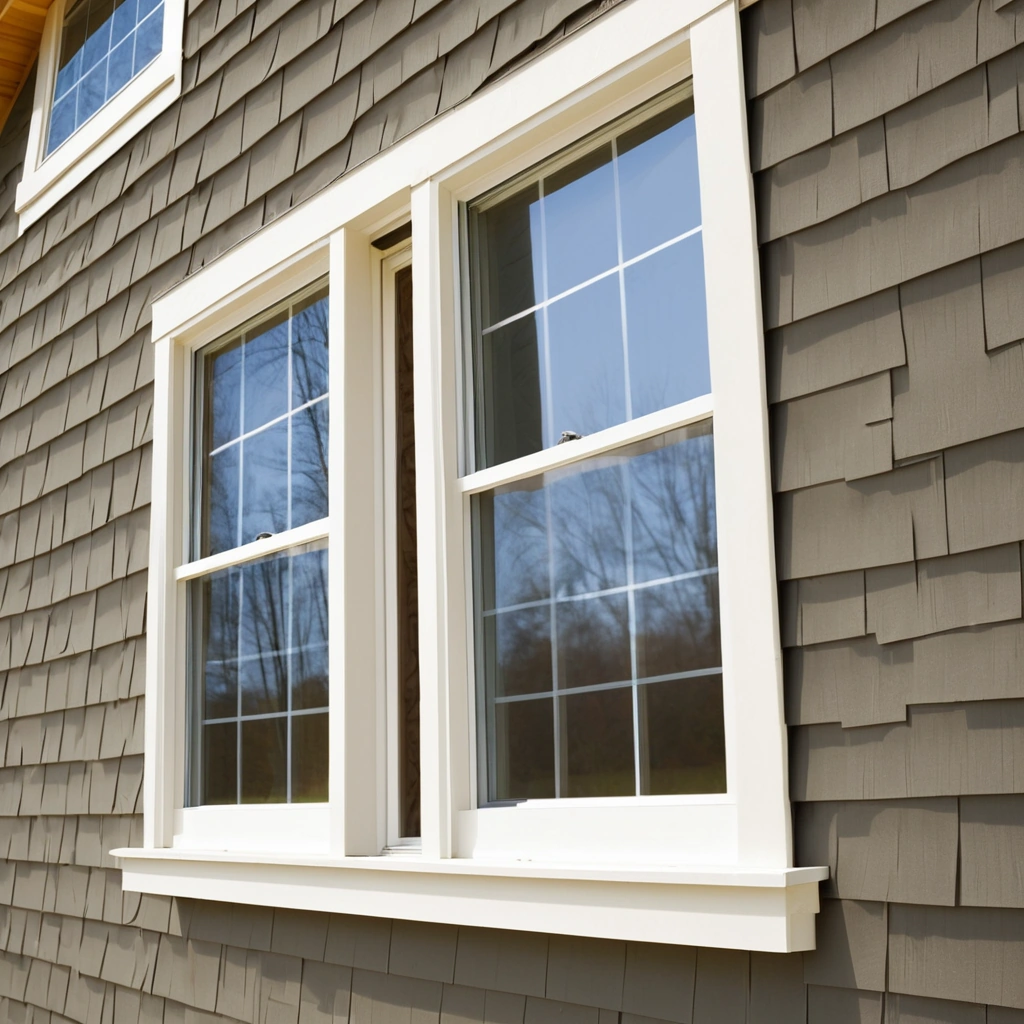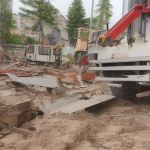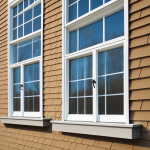Maximize Home Energy Savings: A Step-by-Step Guide to Insulated Windows and Energy-Efficient Siding
Introduction: Unlocking Home Energy Savings
In an era marked by rising energy costs and a growing emphasis on environmental responsibility, homeowners are increasingly seeking effective ways to reduce their carbon footprint and achieve substantial home energy savings. Installing insulated windows and energy-efficient siding stands out as a particularly impactful investment. These upgrades go beyond simple aesthetic enhancements, representing a significant commitment to both long-term financial security and environmental sustainability. Beyond improving a home’s comfort and visual appeal, these renovations lead to considerable and lasting reductions in monthly utility bills.
This guide aims to navigate the intricacies of these vital home improvements. We will clarify energy performance metrics such as R-value and U-factor, enabling informed decisions regarding product choices. We will explore the wide array of options available, from double-pane windows featuring low-E coatings to the long-lasting qualities of fiber cement siding compared to the cost-effectiveness of vinyl siding. Understanding how to evaluate your home’s current energy efficiency through audits and inspections is crucial for pinpointing areas that need improvement.
Furthermore, we will examine the practical aspects of calculating potential energy savings and return on investment (ROI), providing the knowledge needed to assess the financial feasibility of these projects. We will also offer essential information on best practices for installation, ensuring the optimal performance and durability of your investment. Finally, we will explore how to take advantage of available energy rebates and financial incentives to further reduce initial expenses, making these energy-efficient upgrades more affordable and attractive.
Decoding Energy Performance: R-Values and U-Factors
Understanding R-values and U-factors is crucial when selecting windows and siding. The R-value measures a material’s resistance to heat flow – the higher the R-value, the better the insulation. U-factor, on the other hand, measures the rate of heat transfer; a lower U-factor indicates better insulation. For windows, look for low U-factors (typically between 0.25 and 0.50) and high R-values in siding. Different climate zones require different levels of insulation. In colder regions, prioritize higher R-values for both windows and siding to minimize heat loss.
Conversely, in warmer climates, focus on reducing heat gain with appropriate U-factors and solar heat gain coefficients (SHGC). Delving deeper than basic definitions, it’s important to recognize that R-value and U-factor are often inversely related, particularly when comparing different materials. For instance, insulated windows with multiple panes and gas fills achieve low U-factors, signifying minimal heat transfer, which translates to superior home energy savings. Similarly, energy-efficient siding options like fiber cement siding or vinyl siding with added insulation boast high R-values, effectively blocking conductive heat transfer.
Understanding the specific performance characteristics of each component allows homeowners to make informed decisions aligned with their regional climate and energy conservation goals. The interaction between R-value, U-factor, and other performance metrics like SHGC is a key consideration when optimizing for energy efficiency. Low-E coatings on double-pane windows, for example, can significantly reduce solar heat gain in warmer months without compromising visible light transmittance. This nuanced approach allows homeowners to tailor their window and siding selections to specific microclimates and building orientations, maximizing home energy savings year-round.
Furthermore, understanding these metrics is essential when evaluating eligibility for energy rebates and other financial incentives offered by local and federal governments. Beyond the numbers, practical application of R-values and U-factors involves considering the overall building envelope. Even the highest-rated insulated windows and energy-efficient siding will underperform if air leaks exist around window frames or siding seams. Proper installation, including meticulous sealing and flashing, is paramount to realizing the full potential of these upgrades. Engaging a certified contractor ensures that installation adheres to industry best practices, preventing thermal bridging and air infiltration that can compromise energy performance. By taking a holistic approach that considers both material properties and installation quality, homeowners can effectively maximize their investment in energy-efficient home improvements.
Window and Siding Options: A Comparative Analysis
Navigating the world of insulated windows and energy-efficient siding requires a detailed understanding of available options and their respective benefits. Double-pane windows, a popular choice for home energy savings, significantly reduce heat transfer compared to single-pane alternatives. The space between the panes is often filled with an inert gas like argon or krypton, further enhancing their R-value and lowering the U-factor. Triple-pane windows represent a step up in insulation, offering even greater energy efficiency, particularly in colder climates, though the increased cost should be carefully weighed against potential savings.
Low-E coatings are another crucial consideration, acting as a selective filter that allows visible light to pass through while reflecting infrared and ultraviolet radiation, minimizing heat gain in summer and heat loss in winter. These coatings can be applied to one or more panes of glass, further customizing the window’s energy performance. When it comes to energy-efficient siding, homeowners have several viable options. Vinyl siding remains a cost-effective and durable choice, offering good resistance to weather and requiring minimal maintenance.
Fiber cement siding provides superior fire resistance and protection against pests, making it a popular choice in areas prone to wildfires or termite infestations. Insulated siding, which incorporates a layer of foam insulation directly adhered to the back of the siding panels, provides the highest R-value and contributes significantly to overall home energy savings. While the upfront cost may be higher, the long-term energy savings and increased comfort can make it a worthwhile investment. Selecting the right siding also impacts eligibility for energy rebates and incentives.
Ultimately, the best choice for insulated windows and energy-efficient siding depends on a variety of factors, including climate, budget, aesthetic preferences, and long-term energy goals. Consider the local climate and heating/cooling needs when evaluating R-values and U-factors. A colder climate will benefit more from higher R-values in both windows and siding. Homeowners should also research available energy rebates and incentives, which can significantly offset the initial investment costs. Furthermore, remember that ‘High energy rating adds €105,000 to value of second-hand homes’, so these upgrades can substantially improve property value.
Assessing Your Home’s Energy Efficiency: A Step-by-Step Guide
Before embarking on a window and siding upgrade, assess your home’s current energy efficiency. Start with a visual inspection, looking for drafts around windows and doors, gaps in siding, and signs of moisture damage. Conduct an energy audit, either DIY or professional, to identify areas of heat loss or gain. Check insulation levels in your attic and walls. Examine your existing windows and siding for signs of wear and tear, such as cracks, warping, or fading.
Pay attention to your energy bills – a sudden spike could indicate energy inefficiencies. Addressing these issues can significantly improve comfort and lower utility bills. Delving deeper into the assessment process, consider the age and condition of your existing windows and siding. Older single-pane windows, for example, offer minimal insulation compared to modern insulated windows, especially double-pane windows with low-E coatings and argon gas fills. Similarly, deteriorated siding, regardless of material—be it vinyl siding, fiber cement siding, or wood—can compromise your home’s thermal envelope.
Look for signs of rot, insect infestation, or impact damage. A thermal leak around a window frame, easily detectable with an infrared thermometer, can negate the benefits of even the most energy-efficient siding. Understanding these specific weaknesses is the first step towards maximizing home energy savings. Beyond the visual and tactile, a comprehensive energy audit provides a data-driven approach to identifying energy inefficiencies. A DIY audit might involve using weather stripping to seal air leaks, caulking gaps around window frames, and carefully inspecting insulation levels.
Professional energy audits, on the other hand, often employ sophisticated tools like blower door tests and thermal imaging cameras to pinpoint hidden air leaks and insulation deficiencies. These audits provide a detailed report outlining specific areas of concern and recommending targeted improvements, such as upgrading to energy-efficient siding with a higher R-value or replacing old windows with models boasting a lower U-factor. The cost of an audit is often offset by the potential energy savings and access to energy rebates.
Finally, don’t underestimate the power of tracking your energy consumption over time. Analyze your utility bills for seasonal trends and year-over-year comparisons. A sudden increase in heating or cooling costs, even with similar weather patterns, could indicate a developing problem with your home’s insulation or the performance of your windows and siding. This historical data provides a baseline against which to measure the effectiveness of any upgrades you undertake. Furthermore, understanding your energy usage patterns can inform your decisions about the type of insulated windows and energy-efficient siding that will provide the greatest return on investment for your specific needs and climate.
Calculating Energy Savings and ROI: A Practical Approach
Calculating potential home energy savings and ROI extends beyond simple arithmetic; it’s about understanding the interplay of various factors that influence long-term value. Start by meticulously documenting your current energy consumption using utility bills from the past year. This provides a baseline against which to measure future savings. Next, obtain detailed specifications for the insulated windows and energy-efficient siding you’re considering, paying close attention to their R-value and U-factor ratings. Remember that R-value indicates resistance to heat flow, while U-factor measures heat transfer; higher R-values and lower U-factors translate to better insulation.
Utilize reputable online energy calculators, such as those offered by the Department of Energy or Lawrence Berkeley National Laboratory, inputting your specific climate zone, energy prices, and product performance data for a more accurate estimate. To refine your ROI calculations, consider the long-term performance of different materials. While vinyl siding may offer a lower initial cost, fiber cement siding boasts superior durability and longevity, potentially reducing maintenance expenses over time. Similarly, explore the benefits of low-E coatings on double-pane windows, which can significantly reduce heat gain during summer months.
Factor in potential energy rebates offered by federal, state, or local governments, as these can substantially offset the initial investment. For instance, many utility companies provide incentives for installing Energy Star-certified products. Furthermore, consult with a qualified contractor experienced in energy-efficient home renovations to obtain realistic installation cost estimates and identify potential hidden expenses. Beyond the purely financial aspects, recognize the intangible benefits that contribute to the overall value proposition. Improved home comfort, reduced noise pollution, and enhanced curb appeal are all significant advantages that often go unquantified in ROI calculations.
A more comfortable home can lead to increased productivity and well-being, while enhanced curb appeal can boost property value. Moreover, investing in energy-efficient upgrades demonstrates a commitment to environmental sustainability, which resonates with an increasingly eco-conscious market. By carefully considering both the tangible and intangible benefits, homeowners can make informed decisions that maximize their return on investment and create a more sustainable and enjoyable living environment. Finally, remember to investigate all available energy rebates and incentives to further reduce the upfront costs of your home improvement project, maximizing your home energy savings.
Installation Best Practices and Financial Incentives
Proper installation is critical to ensure optimal energy performance. For windows, ensure proper sealing around the frame to prevent air leaks. Use flashing meticulously to protect against water damage, a seemingly small oversight that can lead to significant structural issues down the line. Always adhere to the manufacturer’s instructions; these guidelines are specifically designed for the product’s composition and intended performance. For siding, ensure proper overlap and secure attachment to the wall, paying particular attention to manufacturer specifications regarding fastening schedules and techniques.
Detail work around windows, doors, and corners demands precision; these are prime locations for air and water infiltration. Consider hiring a qualified contractor with verifiable experience in energy-efficient installations, especially those certified by organizations like the Building Performance Institute (BPI). A poorly installed window or siding, regardless of its R-value or U-factor, can negate the potential home energy savings and even lead to moisture problems, fostering mold growth and structural decay. Selecting the right contractor extends beyond mere installation skills; it requires finding a partner knowledgeable about the interplay between insulated windows, energy-efficient siding, and overall building science.
Inquire about their experience with various siding materials, such as vinyl siding and fiber cement siding, understanding that each presents unique installation challenges. Ask about their familiarity with low-E coatings and gas fills (argon or krypton) in double-pane windows, ensuring they know how to handle these delicate components without compromising their insulating properties. A seasoned professional can also advise on optimal placement of windows and siding to maximize solar heat gain in winter and minimize it in summer, further boosting home energy savings.
Their expertise can be invaluable in navigating the complexities of a whole-house energy upgrade. Research available rebates, tax credits, and financing options for energy-efficient home improvements. Many utility companies and government agencies offer incentives to encourage homeowners to invest in energy-saving upgrades, effectively lowering the upfront cost of projects. Explore programs like the Energy Star tax credits, which often provide significant savings on qualifying insulated windows and energy-efficient siding products. Investigate local utility rebates, which may offer cash back or reduced interest rates on energy-efficient loans.
Don’t overlook state-level programs, which frequently provide additional financial assistance for home energy upgrades. Thoroughly understanding and leveraging these energy rebates can dramatically improve the ROI of your investment, making energy-efficient home improvements more accessible and affordable. Furthermore, carefully document all purchases and installations to ensure eligibility when applying for these incentives. Beyond financial incentives, consider the long-term value proposition of investing in high-performance windows and siding. While the initial cost might seem higher, the cumulative home energy savings over the lifespan of these products can far outweigh the initial investment. Factor in the increased comfort and improved indoor air quality that come with a well-insulated home. Moreover, energy-efficient upgrades can significantly enhance your home’s resale value, making it a more attractive prospect for potential buyers. By carefully weighing the costs and benefits, and by taking advantage of available financial incentives, homeowners can make informed decisions that not only reduce their carbon footprint but also create a more comfortable, valuable, and sustainable living environment.


